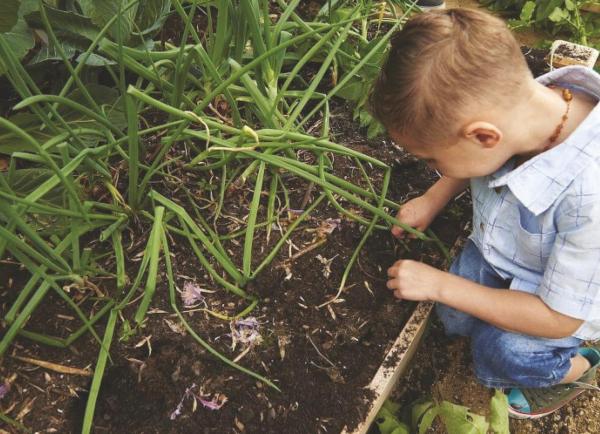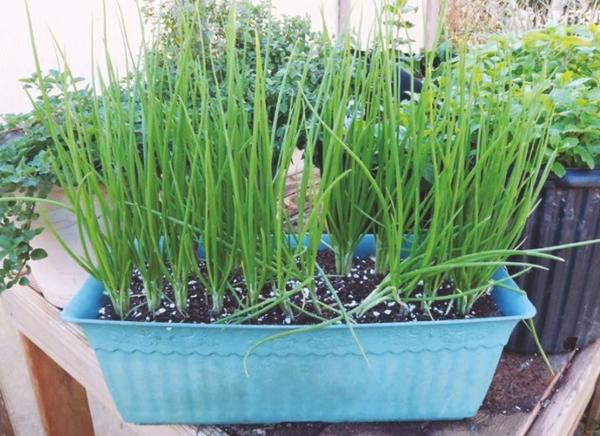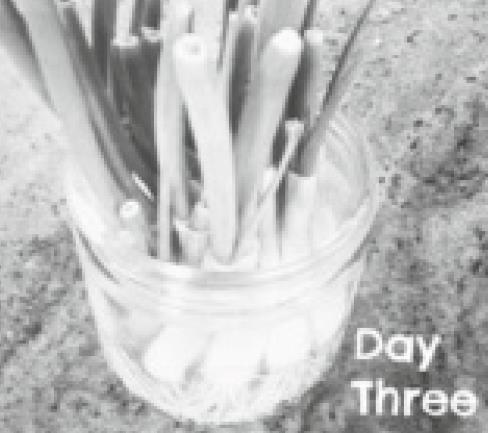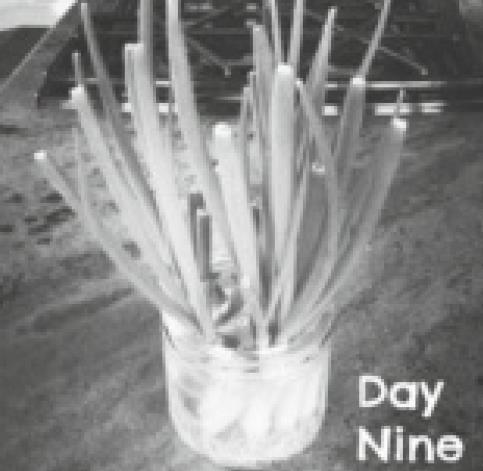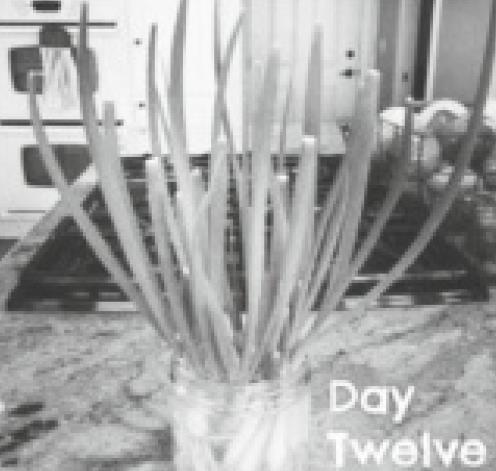Growing Green Onions
It is very hard to imagine any kind of culinary way of life that would not include the onion. A staple of so many cuisines, the onion family members lend a unique savory and pungent flavor to an endless variety of dishes. Eaten both cooked or raw and available all year round, onions and their cousins’ garlic, shallots, leeks, chives, and scallions are hard to avoid and knowing that they offer considerable health benefits, it’s difficult to imagine why anyone would want to. The saying an onion a day will keep everyone away is understandable, especially when you are in my personal space talking to me with heavy onion breath. But you have to eat onions! They are wonderfully delicious and are an extremely healthy vegetable that can be started from seeds, sets, and even the rooted bottom remains of those you’ve just sliced. We will look at growing green onions today but first let’s cover a bit of info about growing onions in general.
Onions are an easy crop to grow due to their hardiness. They are considered a cold season crop. Onions can grow just about anywhere and can be started at different times of the year for a lasting supply. To get onions with big bulbs we need to plant those around October, but now is a great time to plant green onions. It is usually safe to plant for green onions in late February into March and often into early April if the weather is mild. At planting, you should make sure you are using a nitrogen rich soil, onions need lots of nutrients to grow quickly.
Onions can be planted in raised beds, containers, in the ground, and even in pallets between the boards. When planting your onions, it is best to leave about four to five inches in between them and make the rows about 12 to 18 inches apart. This is so the bulb has plenty of room to grow. It is important to plant your onions in a loose soil that is well drained and in full sun. Mulching between the rows and around the plants is recommended to help hold moisture, and to prevent growth of weeds.
Onion are available in many varieties to please many tastes. There are different types of onions that you can grow depending on how sweet or strong you like them. There are different flavors from sweet to very pungent.
Yellow onion – your most common onion. Used in several dishes and can be very pungent. Usually a tearjerker when cutting.
Sweet onion – very tasty in salads, and as garnish. Sweet onions such as the Vidalias or Walla Wallas have a pale-yellow skin, and look white inside, but are actually yellow onions.
White onion – can be strong, at first but tend to have less after taste. A slightly sweet onion that makes for great salsa and guacamole. Used as a side in a lot of burger joints for sandwiches.
Red onion – have a very pretty deep-purple color to them. They can be sweet to spicy and are good roasted or grilled and added to your sandwiches.
Scallions – also referred to as green onions. These onions have a mild flavor and can be eaten raw or cooked.
Shallots – these taste like a mix of garlic and onion. They are bulb-shaped instead of round and are used in sauces and can be substituted with any other type of onion.
Now that we have some onion basics out of the way let’s look into my favorite way to grow onions – green onions in containers. When you are choosing where you want to plant your onions there are things to consider. Planting in containers and in pallets, you will not give your bulb much space to grow, but for green onions these options are great.
When planting in containers I plant the sets closer together because I do not need to allow space for the bulbs to grow. The size of the container will determine the amount you can plant, and the size your onions will get. Just as with those onions we want to bulb, we need to use a nice soil in our growing containers.
Keep in mind that the bigger the greens get, the tougher they are to eat. If you want a tender green onion pick it while it is still small. About eight inches or so is what my family prefers. There is no right or wrong size for picking your onion for eating but I find smaller ones sweeter and tastier.
I like to grow green onions in a container in my windowsill during the winter. That way, I still have fresh onions for snacking. My family loves to pick the fresh green onion, clean it off, dab it in a little salt and enjoy. They eat the green tops and the bottoms that are still small.
In the summer months, it is handy to have a container of green onions on the back porch for adding some flavor to your dinner or salad.
Growing green onions in containers makes a ton of sense since we are not looking for the onions to bulb like those we plant in the ground in October. When it comes to container planting green onions are a perfect fit. The green onion is actually an immature onion that is picked before it is fully grown. When picking your green onion look for unwilted, bright green tops and smaller white to pale green bulbs for eating. To harvest your green onion, gently pull on the top and remove it from the loosened soil.
For a sweeter onion, water more while they are growing. To help tame the pungent flavor, slice them thin, then soak the slices in cold water for a while, even overnight for the really strong ones.
Oh, be sure not to discard the bottom ends. After you have picked your onions out of your onion container (or even purchased some at the market) generally clean them before eating. You most likely clean them by washing off any dirt and then cutting off the rooted bottom part. Next you would generally throw the bottoms in the compost or the trash.
Stop right there!
Instead of tossing them out, which is very wasteful, just replant them in a new container and you will soon be rewarded with another green onion to snack on! Bury the rooted bottom in the soil just like you would an onion set, with small amount of it sticking out of your growing medium and wait. After just a few weeks, you’ll have a new onion. You can repeat this process over and over again for an almost endless supply of green onions.
You can even take green onions purchased from the local grocery store, cut off and use the green ends and place what is left in a jar of water, roots down, on the windowsill. In about 2 weeks you will have more onions to use! This method actually works really well, and the kids just love to be a part of it! Plus, it saves you a little money and you will have less waste, so we all win.



